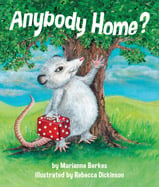Alignment to Standards for MD

| Grade | Number | Standard |
|---|---|---|
| 1 | SC-1.3.0.A.1.c | an organisms external features contribute to its ability to survive in an environment. |
| 1 | SC-1.3.0.B.2. | Provide evidence that all organisms are made of parts that help them carry out the basic functions of life. |
| 1 | SC-1.3.0.E.1. | Describe some of the ways in which animals depend on plants and on each other. |
| 1 | SS-1.3.0.A.1.d | Define map elements as parts of a map that make it easy to use |
| 1 | SS-1.3.0.A.1.e | Describe where places are located on a map using relative distance and direction, such as near-far, above-below and cardinal directions (north, south, east, and west) |
| 1,2 | SS-1&2.3.0.A.1. | Use geographic tools to locate and describe places on Earth |
| 2 | SC-2.3.0.F.1. | Explain that organisms can grow and survive in many very different habitats. |
| 2 | SC-2.3.0.F.1.a | Investigate a variety of familiar and unfamiliar habitats and describe how animals and plants found there maintain their lives and survive to reproduce. |
| 2 | SC-2.3.0.F.1.b | Explain that organisms live in habitats that provide their basic needs: Food, Water, Air, Shelter |
| 2 | SS-2.3.0.A.1.a | Identify the purpose and use of a globe and a variety of maps and atlases, such as school maps, neighborhood maps and simple atlases |
| 2 | SS-2.3.0.A.1.c | Identify the equator, poles, seven continents, four oceans, and countries on a map and globe |
| 2 | SS-2.3.0.B.1.b | Describe and classify regions using climate, vegetation, animal life, and natural/physical features |
| 3 | SS-3.3.0.A.1. | Use geographic tools to locate and construct meaning about places on Earth |
| 4 | SC-4.3.0.A.1.a | a variety of animals or plants in both familiar and unfamiliar environments. |
| 4 | SC-4.3.0.C.1.c | some likenesses between parents and offspring are inherited (such as eye color in humans, nest building in birds, or flower color in plants) and other likenesses are learned (such as language in humans ) |
| 4 | SC-4.3.0.F.1.a | Explain ways that individuals and groups of organisms interact with each other and their environment. |
| 4 | SC-4.3.0.F.1c | Identify and describe the interactions of organisms present in a habitat: Beneficial interactions: nesting, pollination, seed dispersal, oysters filtering as in the Chesapeake Bay, etc. |
| K | SC-K.3.0.A.1.a | features (observable parts) of animals and plants that make some of them alike in the way they look and the things they do. |
| K | SC-K.3.0.A.1.c | Identify a feature that distinguishes animals that fly (as an example) from animals that cannot and examine a variety of animals that can fly to discover other similar features they might share. |
| K | SC-K.3.0.A.1.d | Compare ideas about how the features of animals and plants affect what these animals are able to do. |
| K | SC-K.3.0.A.2.c | similarities in what both humans and other animals are able to do because they possess certain external features. |
| K | SC-K.3.0.D.1. | living things are found almost everywhere in the world and that there are somewhat different kinds of living things in different places. |
| K | SC-K.3.0.E.1. | Develop an awareness of the relationship of features of living things and their ability to satisfy basic needs that support their growth and survival. |
| K | SC-K.3.0.E.1.a | Make observations of the features and behaviors of many different kinds of animals within an environment to identify and begin building a list of some of the basic needs these organisms share, such as water, air, etc. |
| K | SC-K.3.0.F.1. | Investigate a variety of familiar places where plants and animals live to describe the place and the living things found there. |
| K | SC-K.3.0.F.1.a | Describe observations of the place and some of the living things found there. |
| K | SC-K.3.0.F.1.c | Describe ways that animals and plants found in each place interact with each other and with their environment. |
| K | SS-K-3.0.A.1. | globe and maps can be used to help people locate places |
| K | SS-K-3.0.A.1.b | Describe how maps are models showing physical features and/or human features of places |
| K | SS-K-3.0.A.1.d | Identify pictures and photographs that represent places on a map such as a playground and a fire station |
| PK | SC-PK.3.0.A.1.d | Identify some of the things that all animals do, such as eat, move around and explain how their features (observable parts) help them do these things. |
| PK | SS-PK-3.0.A.1. | Recognize that a globe and maps are used to help people locate places |
| PK | SS-PK-3.0.A.1.a | Recognize that maps are models of places |
| PK | SS-PK-3.6.0.E.1.a | Distinguish factual from fictional information (anthropomorphic) |